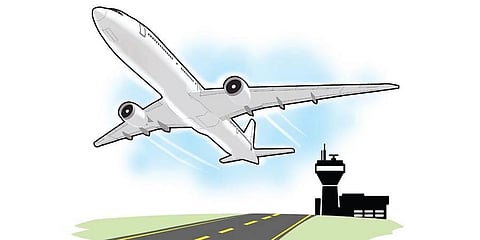Air traffic grew 47 per cent in 2022, lower than pre-pandemic level in 2019
NEW DELHI: Domestic airlines carried 12.3 crore passengers in calendar year (CY) 2022 as against 8.3 crore in the CY2021, thereby registering an annual growth of 47 %, according to traffic data released by the Directorate General of Civil Aviation (DGCA) on Thursday.
The numbers, however, missed to breach the pre-Covid volumes as in the CY2019, domestic airlines had carried 14.4 crore passengers.While domestic air traffic was muted in the first few months of CY2022 due to the third wave of covid-19 pandemic, the past few months has seen a rise in traffic.
According to the DGCA data, domestic air traffic grew 13.7% year-on-year (YoY) to 1.27 crore passengers in December 2022 as against 1.12 crore passengers in December 2021. In the pre-covid era, normal traffic per month stood at about 1.2 crore passengers.
Meanwhile, IndiGo’s market share came down to 54.9% in December 2022 as against 55.7% a month ago. Tata group-owned airlines- Air India and Vistara had a market share of 9.2% each last month. For the full CY2022, IndiGo’s market share was the highest at 56.1%, followed by Vistara at 9.2% and Go First at 8.8%. SpiceJet had a market share of 8.7% in 2022 even as it faced multiple challenges, including technical snags and cap on its operations.
Ratings agency ICRA had recently estimated that despite fully opening the domestic and international operations, domestic airlines are expected to report a net loss of Rs 15,000 crore to Rs 17,000 crore in the financial year 2022-23. The losses are mainly attributed to elevated aviation turbine fuel (ATF) prices and the recent depreciation of the Indian rupee.

